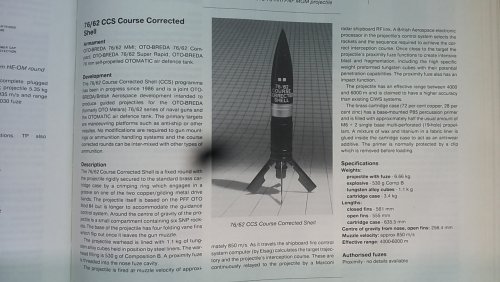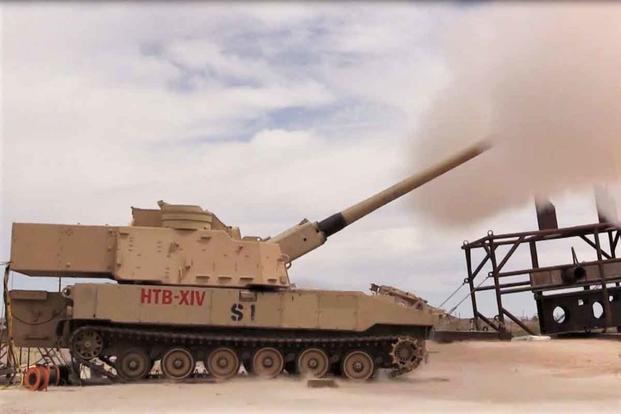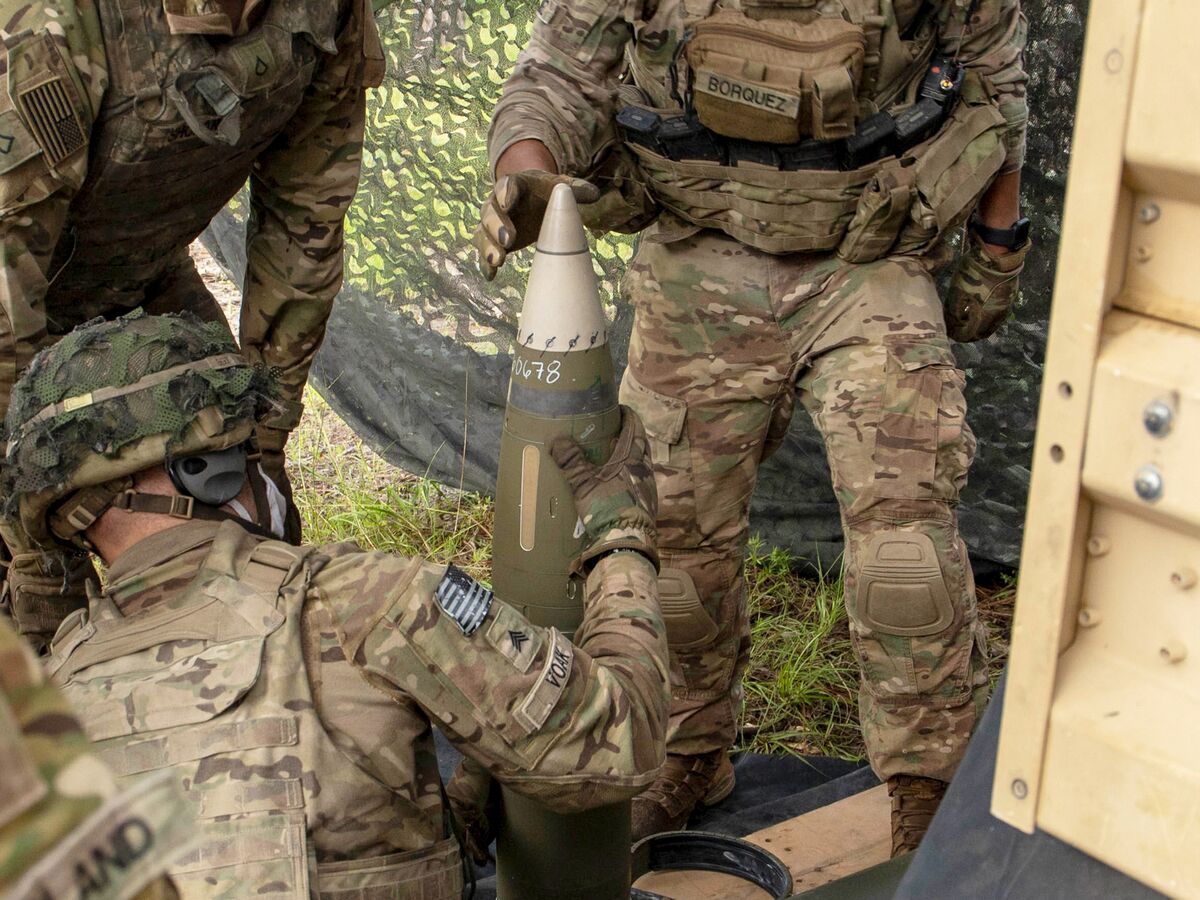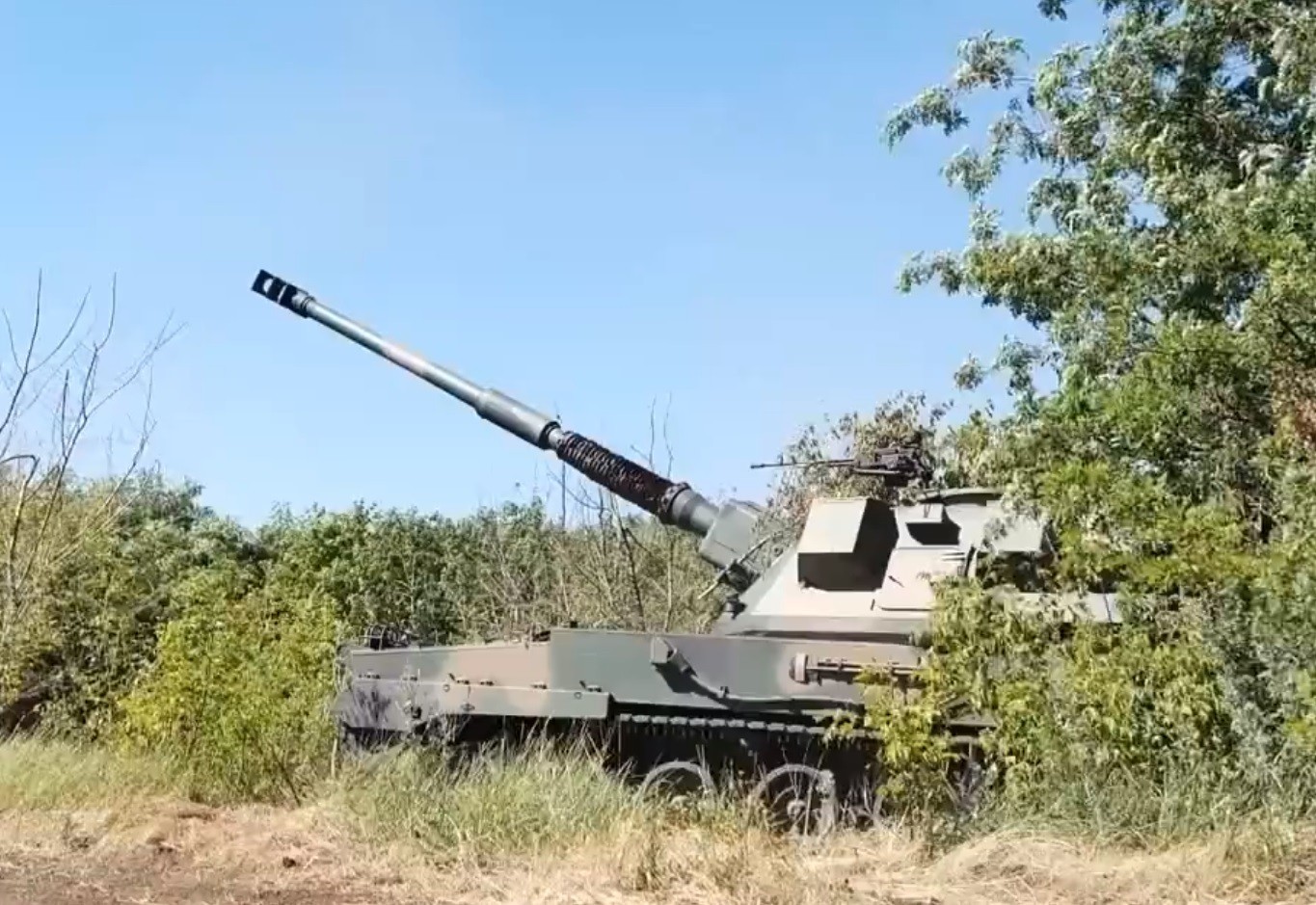Why bother? GMLRS is much better and goes a lot further hence you need to carry less rounds to ensure having a firing unit in range. Of course Raytheon don't make MLRS hence their puffery. Why regurgitate meja spin?
An artillery round no matter if it is rocket assisted or not will ALWAYS BE CHEAPER AND EASIER TO MASS PRODUCE than any artillery rocket...
Excalibur is neither cheap nor mass produced though. No 155mm projectile the USA makes is mass produced by historic use rates.
If WW1 required a million shells a day, WW2 required 100,000, and the current modern era (WW3) requires about 10,000 a day, roughly speaking.
Which means America would probably need to increase production by an order of magnitude, for a decade or so, or two orders of magnitude for maybe a year or two, to seriously cover historic use cases. The last war actually saw something similar happen, where America went into it woefully under-prepared and had to spend a year reorganizing itself, despite starting its rearmament program in the mid-1930's, except America had a tremendous surplus agrarian workers and car factories to convert to ammo plants. This was manageable at the time if not ideal.
It no longer has this, so WYSIWYG and America's ammo industrial base is rather weak.
PGMs like Excalibur have meaningfully managed to reduce the requisite quantity of shells/year from something like 2 million in WW2 to 200,000 these days, I guess but their production rates went from 90,000 to 900? Oof. The Soviets had it right, at least in terms of mass scale peacetime production, but I'm not sure the USSR's relatively prodigious productive capacities were adequate at any point in its history to absorb the ammo consumption for very long in a hypothetical WW3 that was conventional in nature rather than nuclear.
There are truly frightening scales of ammo consumption spoken of in ancient Soviet military studies, with levels greater than even Verdun's mass barrage being considered routine, although granted those were against the Maoist PLA, but still...
And how the Soviets fought, and Russias are fighting and failing, is no way NEAR how the US fights.
Look closer to Korea and Nam where air power and precision arty hits carried the day.
Two wars where America lost show how America can win wars? What?
The USSR won in Hungary and Czechslovakia because it could mass so much considerable firepower immediately that it overawed the enemy into not reacting. The US won in Desert Storm for the same reason, and it won in Iraq in 2003 because it managed to get the world to commit to a 12 year long siege in the aftermath, thus forcing Iraq to fall further than America did relatively speaking and it won even more impressively.
Naturally, it lost the occupations of Afghanistan and Iraq pretty hard, for similar reasons to the USSR, in that it couldn't muster enough firepower to breakthrough to the terrorist camps in neighboring countries and sustain a full-front war against the opponent. A similar problem to Vietnam. Unfortunately, America's novel attempt at having its ally undermine its war effort in Afghanistan, whereas the Soviets merely antagonized Pakistan, did not pay out in the end.
I don't think anyone considers "~150-300 shells" to be a "mass barrage" except maybe in journalist anecdotes, but that's about how many Copperheads or Excaliburs you're expending to destroy a battalion's defensive strongpoints of dug-in platoons. Once you account for all major combat systems of the battalion (the vehicles, dismounted platoon machine guns, and ATGWs) that's about 1.5:3 which should be able to account for the overkill of the terminally guided submunitions.
It will let the assaulting mechanized company push through the battalion's defense zone with a covering barrage, which is a more traditional creeping-type, and eats more ammo, but that's all it does: it lets you do more with fewer footmen.
Which means the typical American annual ammo production of ~300 rounds of Excalibur over the past 20 years can defeat about 1-3 battalions or so before going to next year's lot, back about the past 20 years.
So the US Army might be able, assuming it never misses a shot or loses any ammo stores, destroy about 20-60 battalions in a major war before running out of ammunition if it had to do so today. That's assuming it never shot any, either. Let's cut them a break and assume it's closer to 10-40 battalions.
While much better than expending the dumb artillery requirement of about 8,000-12,000 rounds against a dug-in battalion, you still need to expend a hundred million a year on ammo production of that one nature of artillery alone. The US Army would be better if it could make approximately 6,000-12,000 shells/year, roughly about as many to twice as many as it has made of Excaliburs ever produced, and sustain that for roughly a decade or two. It would certainly be in fairer waters in terms of ammo consumption, but this won't happen.
Thats before you get into the special munitions like Bonus...
No, actually, I was assuming the US would be using exclusively SADARM and Excalibur-type munitions in my mental napkin math.
Naturally, if it's not, which it won't, and we assume they're firing cassette munitions or conventional HEF rounds, the requisite number of shells jumps up a couple of orders of magnitude. Of its cheapest munitions, the US Army has something like 250,000-300,000 M1122 shells which are converted ICM shells that are used for training, but they have an explosive filler. It has about half as many M795 projectiles.
If we use only "war stockpiles" the US can fire from the, frankly dramatic but perhaps plausible in a more serious ground war, "70,000 shells a day" we see in Ukraine for about...eh maybe a business week if they're careful at husbanding projectiles and don't lose too many ammo points to drones or long range missiles. If we include the M1122 shells it can go for about three weeks tops.
That's all very generous though. If they were firing like the Red Army with discrete norms, or AFATDS is some kind of ultra techno-god-king AI that overrides the guns and crews through Neuralink implants these days, then it will last about a business week total. The M795s will be gone on Monday and the M1122s will last until Thursday evening or so. Then the soft serve ice cream machine is broken.
Looks like the US Marines aren't actually insane? Of course that's maybe their one good idea along with mass issue of silencers.
Even during Nam in Tet when US Arty was changing barrels near weekly due to wear out, it was presice hits of a few dozen shells at most before moving on to the next target. And used a fraction of the shells to get the same effect.
Yes the US was able to sustain a fight in Vietnam, which is comparable in intensity to Ukraine, because it had tons of WW2 surplus to eat through.
Amusing anecdote time, the US ran extremely low on .50 caliber and small arms ammunition during the 2003 invasion, requiring dipping into that Vietnam era production lot. So embarrassing was it asking Israel and Pakistan to produce ammo for it during the occupations that DOD spent the better part of the last 20 years refurbishing and opening a couple new ammunition plants to supply a few billion more rounds of ammo of all calibers from 12.7mm down to 9mm.
But small arms are only a small part of America's generally dismal ammunition production base.
America went from 300-400 Excaliburs to 900 Excaliburs this year, which will probably last about three or four hours in a Ukraine scale war. Maybe next year they can bump that up to like IDK 12 hours? Of course, Ukraine isn't even what the US Army would consider "mid-intensity", going by loss rates of the forces deployed/day and US's own intelligence estimates.
The point I'm making is that the US should be producing Excaliburs at approximately the rate it's producing dumb artillery shells i.e. 10-30,000/year. Otherwise you should be ponying up production about twice or quadruple as much as the M795s are currently, which based on some funny numbers I found is roughly 35,000/year on average, but it's the US Army so it waffles rapidly between like 20,000 shells and 60,000 shells a year. Not good, but depending on how dour you are that either lasts until lunch or it lasts two weeks of combat.
It just isn't, partly because I doubt it can (there aren't enough workers for the factories anymore) and because, this is rather more disturbing, it thinks it doesn't need to.
Now I'm pretty sure the lead time on these kinds of super fancy Excalibur and Durandal and Joyeuse-type shells is longer than two weeks. Maybe two months if America is lucky, but it's probably probably closer to 6-12 months to get geared up for production after you literally scour the Earth for enough people to man your atelier sized production floor, or longer. Javelin is something like a 24 month lead time, but it's a rocket, and rocket motors take a long time to cure (months), so I'm not terribly surprised by that. I'm willing to give Excalibur the benefit of the doubt and assume the US "merely" requires a year's worth of ammunition in storage to chew through before it starts new ammo.
War reserve stockpiles, if you intend to rely on production, should be at a maximum annual rate of "as high as I can get it" with a floor of "consumption of ammo over = lead time". If you don't, and the Soviets didn't because they expected their factories to be radioactive ash and uranium glass, then it should be "however much ammo we ate in the last war, then double it" I guess. Otherwise, you will run afoul of the logistician's wrath, like Erwin Rommel (his entire career lmfao) and Douglas MacArthur (Philippines Campaign) did, and need to high tail it out of there with your tail between your legs.
Somehow, I doubt the US will have the political grit, or even the industrial capacity, to mount a Solomon's Campaign 2, if it gets cheek clapped out of the SCS or something for want of ammo for its ground troops. Of course, that's what peacetime is for! It's the time you use to prepare for the next big war by making lots of stockpiles of ammo and sitting on them for 30 years.
The US has never experienced this itself, but it also isn't stupid and it can read other languages, as everyone knows the U.S. Congress speaks, reads, and can theoretically respond in any living language yet merely chooses to reply in the most boisterous Americanese it can muster. The DOD likewise can understand any military history and conflict in human civilization in mathematical terms, yet chooses to crib its language from soulless corporate Powerpoints and academic Ivory Towers instead. So it should understand this, at a macroeconomic and military sense, and it should be able to look at present wars and say "yeah that's no bueno we need more shells".
Which it's doing, or at least it appears to be make overtures of doing. It's just put-putting around it instead of taking it seriously, as usual.
Perhaps there's some Big Plan to achieve 10,000 Excaliburs/year by 2030 or something, or maybe ramp up production of HEF shells from 300,000 to 900,000/year, and then sustain that for the next 20 years or something, build up a requisite stockpile of munitions to fight the next Big One with, but it doesn't really seem like it. Seems more like a knee-jerk reaction that will get lost in the noise in about 5 years, if it is lucky.
But who can say, history can be rather funny sometimes. It was rather funny that the USSR prepared zillions of shells and tanks and never got a super world war to use them all, after all. So now its successors are sitting on literal mountains of ammunition and clobbering each other with them. Perhaps it will be funny if America finds itself mid-century merely suffering the least from the XXI's macroeconomic maladies and has no apparent muscular military foes left, like it did in the 1990's, but for much, much longer.
That's not exactly the soundest military planning but it's entirely plausible. I'd prefer the production of a few thousand Exaliburs per year myself than wishing the opponents away.
Basically, America is in the same position in 2022 than it was in 1982: not enough ammo against too many opposed battalions. The absolute numbers have changed, but I imagine the relative exchange rates have actually decreased against America, as Desert Storm had a severely detrimental effect on the American war psyche. At least the DOD had a singular opponent in mind in 1982, after all. PGMs, after all, do not seem to actually alter the capital investments needed as significantly as they alter the absolute production time, series assembly lines, and manpower investments needed to destroy a comparable quantity of battalions on the battlefield.
You might be dropping a fat $1bn per year on a specific singular nature of ammunition, but it's the difference between needing a factory that supports the production of 10,000 rounds/year as opposed to 100,000 rounds/year, really. One factory will be cheaper than the other to run and require fewer employees, which is beneficial to the contractor (potentially higher profit margin) and beneficial to the military (less lead time and less absolute production time). So PGMs are beneficial for demographically declining/sub-replacement fertility societies, because they require absolutely fewer workers, making absolutely fewer items to be transported between locations, to achieve similar effects as an order of magnitude greater quantity of conventional munitions.
The relative investment is probably similar though, except you're a demographically declining society with birthrates asymptotically approaching zero, so eventually the dumb munitions will become too much weight to bear and become inefficient. My personal opinion is that America passed this point sometime in the nineties and the defense industrial base just hasn't realized it yet, given it's still producing huge quantities of dumb shells.
The next step from PGMs is tactical nuclear weapons, which continue the trend of "equal investment --> order of magnitude decrease in tangible/real consumption," being an order of magnitude better than PGMs, which are an order of magnitude better than conventional munitions. Of course America gave up tactical nukes a long time ago for field artillery and doesn't seem too keen on giving lieutenants and staff sergeants the ability to call down a couple kilotons on a suspected motor rifle platoon, as was done in the Pentomic Division, but it probably should to gear up for the 2050s demographic squeeze.
I could see the PRC giving its lieutenants nuclear fire authority long before the DOD though, and the PRC won't be much different than the USA in 2050, at least in terms of median age and population pyramid, where it will absolutely be better off than America's closest regional (and some global) allies; but I imagine it will just use robots or something instead.
 raytheon.mediaroom.com
raytheon.mediaroom.com




